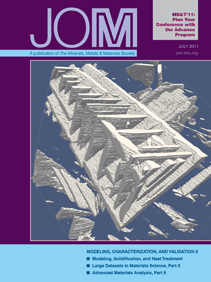VISIT THE
JOM COVER GALLERY
|
|
U.S. Supreme Court Makes It Easier
for Patent Licensee to Have Its Cake
and Eat It Too
Arnold B. Silverman
In the recently decided case of Med-Immune vs. Genentech, the U.S.
Supreme Court ruled that a patent
licensee may continue to obtain the
benefits of being a patent licensee while
initiating litigation to challenge validity
of a licensed patent. This decision will
make it easier for a licensee to challenge
a patent while continuing to obtain the
benefit of the license. Under prior law,
before a licensee could initiate such
litigation, it had to breach the license
agreement by not paying royalties or
terminate the license agreement. This
exposed the licensee to the risk of the
licensor initiating litigation for breach
of the agreement or, in the event the
licensee terminated the license before
challenging validity, the licensor initiating
litigation for patent infringement.
In 1969, the U.S. Supreme Court ruled
that clauses in license agreements which
precluded a licensee from challenging
validity were not enforceable as being
contrary to public policy. The licensee
who wished to challenge validity was
required to repudiate the agreement by
breaching the agreement or by terminating
the same. The public policy of
favoring challenges to invalid patents
could not, however, be furthered by the
licensee without assuming substantial
risks.
The issue before the court in the
MedImmune case was whether a licensee
could avoid the risk of litigation for either
breach of contract or patent infringement
by continuing to pay royalties under the
agreement and simultaneously challenging
validity by a declaratory judgment
action. This would provide the licensee
with the double benefit of both being a
licensee and challenging validity.
Under the U.S. constitution, one who
is involved in a case or controversy with
a third party need not wait to be sued,
but rather can initiate litigation in the
federal courts seeking to have a declaration
consistent with that party’s view of
the case. The Declaratory Judgment Act
requires that there be an actual controversy
before such court action can be
initiated.
In the Med-Immune case, MedImmune
was licensed by Genentech to manufacture
and sell a pharmaceutical useable
in treating certain respiratory diseases
in young children. The license agreement
stated that MedImmune had an obligation
to pay royalties until such time as
the patents were held invalid. Genentech’s
position was that because the
pharmaceutical was covered by one of
the patents, MedImmune owed royalties
under the agreement. MedImmune
believed that no royalties were due, that
the patent was invalid and unenforceable,
and that there was no infringement.
Under prior law, MedImmune’s options
would have been to either continue to
pay royalties under the agreement and
refrain from challenging the validity of
the patent or to breach or terminate the
license agreement and initiate action to
have the patent declared invalid and/or
not infringed. The latter approach
exposed the licensee to a risk of a court
finding that it was a willful infringer and
imposing treble damages and, within the
court’s discretion, compelling the
licensee to pay the licensing attorneys’
fees.
In the MedImmune case, the Supreme
Court ruled that one seeking to obtain a
declaratory judgment that a patent was
either invalid or unenforceable or that it
was not infringed may initiate such litigation
while continuing to perform its
obligations under the license agreement
by paying royalties.
Genentech had no basis for initiating
legal action as MedImmune was performing
its obligations under the license
agreement. Genentech could only await
initiation of litigation by MedImmune
and defend itself in the litigation. While
Genentech argued that the licensee’s
continuing to pay royalties eliminated
the “actual controversy,” the Supreme
Court in an 8 to 1 decision found that
the argument lacked merit.
The Supreme Court has, therefore,
clarified and expanded the right of a
licensee to challenge patents which it
believes to be invalid, unenforceable, or
not infringed. Inherent in this ruling is
a reaffirmation of the court’s view that
it is in the public interest to permit full
and free competition in the use of ideas
which are in reality a part of the public
domain. This decision obviously makes
it easier for a licensee to challenge validity
or obtain a declaration that its conduct
does not infringe a patent, while not
exposing itself to the risks existing under
prior law.
In summary, it is important for both
potential licensors and licensees to have
an accurate understanding of the contractual
rights and obligations provided
for in the private license agreement, as
well as the law which will govern the
same.
For more information, contact A.B. Silverman at
Eckert Seamans Cherin & Mellott, LLC, 600 Grant
Street, 44th Floor, Pittsburgh, Pennsylvania 15219
(412) 566-2077; fax (412) 566-6099; e-mail abs@escm.com.
|

